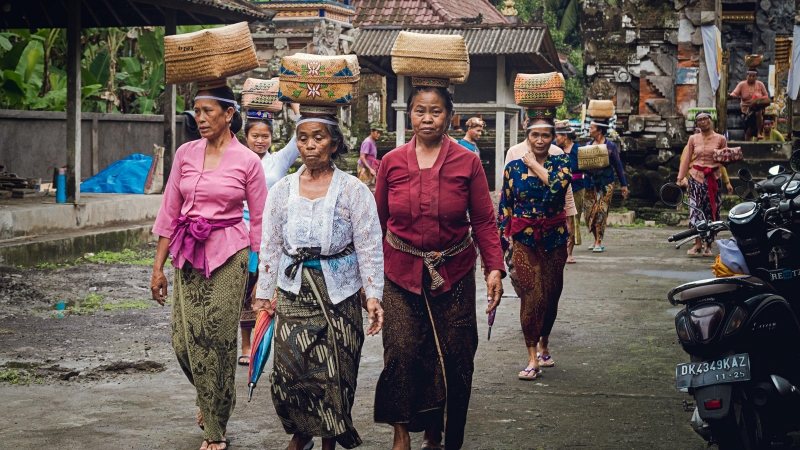Heavy rains over the past week have caused flash floods and landslides that have not only claimed lives but also severely affected the tourism industry, which is the backbone of Bali's economy.

Bali is a tourist paradise but is facing many problems due to natural disasters.
According to Reuters reports, the natural disaster has killed at least nine people and affected more than 600 others across the island. The situation has been particularly dire in the capital city of Denpasar, where flooding has claimed five lives and flattened two buildings. Images and videos shared on social media show a completely different Bali: main roads, usually bustling with traffic, are now submerged, causing severe traffic congestion.

Bali - Indonesia's popular tourist destination - is suffering severe floods this week, causing heavy losses of life and property.
Travel to key areas, especially Bali International Airport, has become extremely difficult. Access to this important air hub has been restricted, with only trucks allowed on the roads, causing chaos and disrupting the schedules of hundreds of travelers.
The situation has left many tourists stranded, unable to reach their intended destinations or leave the island as planned. This situation has not only disrupted their vacations but also caused great concern for their safety. Many tourists have had to find ways to return home earlier than planned, creating a wave of tour cancellations and sudden schedule changes, causing significant losses for airlines and travel companies.

According to Reuters, at least 9 people have died and 600 have been affected in Bali due to flooding. In Bali's capital Denpasar alone, floods have killed 5 people and collapsed two buildings.
Many local businesses that depend on tourism, from souvenir shops to restaurants and hotels, have also closed, threatening the livelihoods of thousands of workers. Roads leading to popular tourist destinations are now blocked, making hotels and resorts inaccessible to tourists, turning a dream vacation into a difficult and uncertain experience.
In response to the emergency, the Indonesian government has taken swift action to support the relief efforts. About 200 rescue workers have been deployed to evacuate residents and tourists, and to distribute essential items such as tents, food, blankets, mattresses, water pumps and rubber boats. President Prabowo Subianto has also personally directed the head of the National Disaster Mitigation Agency (BNPB) to fly to Bali to oversee the emergency response. These actions demonstrate the government's determination to minimize damage and stabilize the situation.

Floods have caused severe traffic congestion, blocking major roads in Denpasar and key areas.
But the disaster is also a reminder of the increasingly visible impact of climate change. Experts say climate change is altering the severity and duration of the monsoon season, which typically runs from November to April, making it more intense and unpredictable. Extreme weather events in Indonesia have increased in recent years, with less predictable rainfall and stronger winds leading to more frequent flash floods.

Access to Bali International Airport - a key gateway for tourists - is severely restricted, with only trucks allowed on the roads.
In addition to Bali, Flores Island in East Nusa Tenggara province was also hit by a devastating flash flood, killing four people and leaving four others missing. The disaster cut off transportation and telephone service in 18 villages, isolating thousands of people. This situation highlights an urgent reality: countries like Indonesia need to take more proactive disaster management and adaptation measures to cope with the ever-changing weather and minimize the impact of natural disasters. This is not just a story of Bali or Flores, but a warning for all tourist destinations around the world that natural beauty also comes with unpredictable risks from nature itself.



































